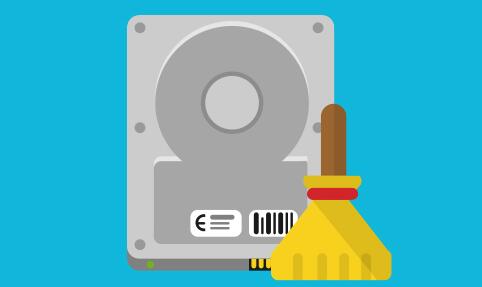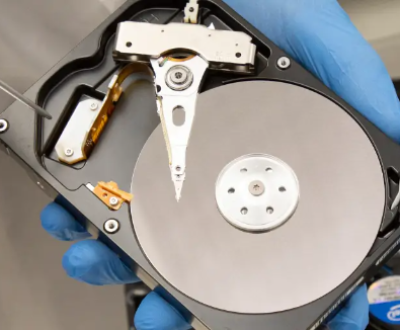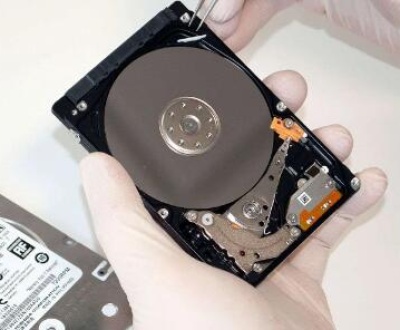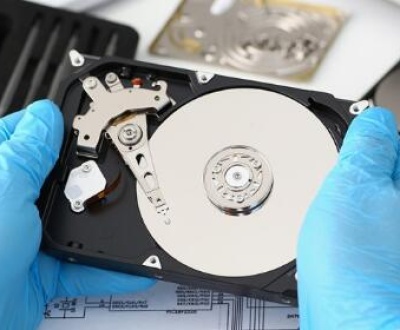A “recovered file” typically refers to a file that was once lost, deleted, or inaccessible but has since been restored or recovered through the use of data recovery software. In the context of disk cleaning tools like Wise Disk Cleaner, the term “recovered file” may be slightly misinterpreted, as disk cleaners are designed to clean junk files, system caches, temporary files, and unnecessary files to optimize disk space rather than to recover lost files. However, understanding the concept of file recovery is crucial when using any software tool that interacts with file systems, including Wise Disk Cleaner. Let’s explore the concept of recovered files in detail, including the scenarios where files are lost, how they are recovered, and the role disk cleaning software plays in this process.
1. File Loss and Deletion
Files can be lost or deleted in several ways, and the first step in understanding file recovery is recognizing the different scenarios where files might become inaccessible:

Accidental Deletion:
A user might accidentally delete a file by selecting it and pressing the delete key or using the wrong option in the file management system.
System or Software Errors:
Files might be lost due to system crashes, software malfunctions, or operating system bugs. In these cases, the file system might mark the files as “corrupt” or inaccessible.
Disk Corruption:
A disk can become corrupted due to a number of reasons, such as a hardware failure, improper shutdowns, or power surges. Corruption can cause files to become unreadable or inaccessible.
Malware or Virus Attacks:
Malware and viruses can delete or corrupt files on a computer. In some cases, they may disguise the deleted files and make them harder to recover.
Formatting or Repartitioning:
Files can be lost if a storage device is accidentally formatted or if the partitioning structure is modified without backing up the files.
File Overwriting:
When new data is written to a storage device, it can overwrite the existing data, which might make it impossible to recover files that were previously stored there.
2. How Files are Stored and Deleted on a Disk
To understand how files are recovered, it’s important to know how data is stored on a disk.
File Allocation:
When files are created, the operating system allocates a specific portion of the disk to store the file data. This data is typically stored in blocks or sectors on the disk.
Deletion Process:
When a file is deleted, the operating system doesn’t immediately erase the file’s data from the disk. Instead, it removes the reference to the file from the file system’s index (also called the file allocation table or master file table). Essentially, the data still exists on the disk, but the operating system treats it as “free space,” allowing new data to overwrite it.
Data Recovery:
Data recovery works by scanning the disk for areas where the file data is still present but not referenced by the file system. If the space hasn’t been overwritten by new data, it may be possible to recover the file by restoring the reference to that data or by reconstructing the file from its fragmented pieces.
3. Role of Wise Disk Cleaner in File Recovery
Wise Disk Cleaner is primarily a disk-cleaning utility, not a dedicated data recovery tool. Its main functions include:
Cleaning up junk files: Temporary files, system cache, browser history, and other unnecessary files that occupy valuable disk space.
Removing invalid shortcuts: Deleting shortcuts that no longer point to valid files or applications.
Optimizing disk performance: Improving system performance by removing old or unused files and defragmenting the disk.
While Wise Disk Cleaner’s primary goal is optimization, it can indirectly influence file recovery in a few ways:
Impact of Disk Cleaning on File Recovery:
If the disk cleaner tool deletes files or optimizes areas of the disk that contain lost data, it could reduce the likelihood of successful file recovery. This is because disk cleaning tools might overwrite areas of the disk that were marked as free space but still contained recoverable data.
For example, if a file was accidentally deleted but not yet overwritten by new data, Wise Disk Cleaner might clean temporary files that are in the same area of the disk, inadvertently erasing any traces of the deleted file.
Importance of Caution:
When performing disk cleaning operations, it is important to be cautious if you suspect that important files are still recoverable. If you’ve lost a file and want to recover it, it’s best to stop using the device immediately to avoid overwriting the lost file and to use a specialized data recovery tool rather than a disk cleaner.
4. Types of File Recovery Methods
When files are lost, there are several methods of recovery, each with varying degrees of effectiveness depending on the situation.
1. File Recovery Software:
Panda Assistant is a comprehensive data recovery software designed to help users recover lost or deleted files from a variety of storage devices, including hard drives, SSDs, USB drives, memory cards, and more. With a user-friendly interface, it simplifies the process of retrieving lost data, even from formatted or corrupted drives. Panda Assistant employs advanced algorithms to scan devices thoroughly, identify recoverable files, and restore them to their original state.
The software supports a wide range of file types, including documents, photos, videos, and system files, making it versatile for personal and professional use. Whether files were accidentally deleted, lost due to system errors, or even after a virus attack, Panda Assistant aims to provide a reliable solution for recovery.
Additionally, Panda Assistant includes features such as previewing files before recovery and the ability to recover files from lost or damaged partitions. The software offers both free and paid versions, with advanced recovery capabilities in the paid version. Ideal for users looking to recover lost data without extensive technical expertise, Panda Assistant is a powerful tool in data protection and restoration.
2. Data Recovery Services:
For complex or severe data loss situations, professional data recovery services may be needed. These services have specialized tools and cleanroom environments to recover data from physically damaged disks.
3. File System Repair:
In cases of disk corruption, some file recovery can be done by repairing the file system itself. Tools like CHKDSK (Check Disk) or the built-in file repair utilities in operating systems can sometimes fix minor file system corruption and restore access to lost files.
5. Factors That Affect File Recovery
The success of file recovery depends on several factors:
Time Since Deletion:
The longer it has been since the file was deleted, the more likely it is that the file’s data has been overwritten by new data, making recovery more difficult.
Amount of Disk Activity:
If the disk has been heavily used after the file was deleted, the chances of overwriting the deleted data are higher, which reduces the likelihood of recovery.
Type of File System:
Some file systems are more resilient to data loss than others. For example, the NTFS file system used by Windows is generally better at managing data recovery than FAT32. which is older and more prone to corruption.
Disk Health:
If the disk is physically damaged, recovery becomes more complicated. Mechanical failures, such as a damaged hard drive or bad sectors, can make it difficult or impossible to recover files.
6. Preventing File Loss in the Future
While file recovery can often be successful, it’s always better to prevent data loss in the first place. Here are some steps to avoid losing files:
Backup Regularly:
Using cloud services or external storage devices to back up important files regularly ensures that you won’t lose valuable data in case of a disk failure or accidental deletion.
Use File Versioning:
Some applications and file storage services, like Google Drive or OneDrive, offer version history, which allows you to revert to previous versions of a file. This can be helpful if a file is accidentally overwritten or corrupted.
Be Cautious with Disk Cleaning:
Before using disk cleaning software like Wise Disk Cleaner, ensure that you’ve reviewed the files it plans to delete. It’s advisable to back up important data beforehand.
A “recovered file” refers to a file that has been restored from a state of deletion, corruption, or inaccessibility. While Wise Disk Cleaner is not specifically designed for file recovery, understanding how recovery works in general is important when using such tools. Disk cleaning operations can sometimes hinder recovery if they overwrite lost data, which underscores the importance of careful file management and the use of dedicated recovery tools. By following best practices, such as regular backups and cautious disk cleaning, you can minimize the risk of losing important files and improve your chances of successful recovery should the need arise.
About us and this blog
Panda Assistant is built on the latest data recovery algorithms, ensuring that no file is too damaged, too lost, or too corrupted to be recovered.
Request a free quote
We believe that data recovery shouldn’t be a daunting task. That’s why we’ve designed Panda Assistant to be as easy to use as it is powerful. With a few clicks, you can initiate a scan, preview recoverable files, and restore your data all within a matter of minutes.
Subscribe to our newsletter!
More from our blog
See all postsRecent Posts
- Best data recovery service london 2025-05-23
- External hard drive data recovery cost 2025-05-23
- Hard drive data recovery new york 2025-05-23

 Try lt Free
Try lt Free Recovery success rate of up to
Recovery success rate of up to









